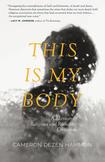Review: Can you be a woman of both faith and feminism?
The Russian feminist protest punk rock group Pussy Riot bellowed their “Punk Prayer” on the altar at the Cathedral of Christ the Savior in Moscow in early 2012, aware that the lyrics juxtaposed with the location would invigorate the fight against sexism prolific in patriarchal religious societies. But a majority of feminists—myself included—do not have the chutzpah to be a Pussy Riot and so must advocate for feminism in other ways. This is My Body, by Cameron Dezen Hammon, is a warning about how a feminist can fall prey to and rationalize the pervasiveness of misogyny, despite his or her best intentions.
Hammon opens her memoir with her baptism. Born in a New Jersey suburb to a Jewish father and a non-Jewish mother, she has a crisis of faith when she is pressured into having sex and subsequently contracts HPV. Her physician finds precancerous lesions, and she settles on becoming a Christian, not so much from internal reflection culminating in belief but because Christianity offered the best option for an afterlife. Hammon chooses the denomination that is readily available and starts her tumultuous relationship with evangelical Christianity.
This is My Body, by Cameron Dezen Hammon, is a warning about how a feminist can fall prey to and rationalize the pervasiveness of misogyny, despite his or her best intentions.
Her autobiography wrestles with the dichotomy between being a woman of faith and a woman of feminism, with the former forcing her to live as a shadow of the woman and artist she could be. After repeated attempts to become an ordained minister, her value is consistently diminished. Hammon eventually comes to the conclusion that “my female body was an issue, would always be an issue. I saw it clearly for the first, but definitely not the last, time.” She realizes that any success she would have in ministry would be attributed to her husband, a standard that is common among evangelical Christians and one that she subliminally encourages herself.
True to her musical roots, Hammon’s book reads like an album, with each chapter a song. This structure works both for and against her, as it allows the reader to have a neatly packaged cathartic experience that begins and ends with the chapter, but at times it disorients the reader in regard to the timeline of the series of events.
The book’s true power lies in Hammon’s awareness of her own moral weakness, and she willingly shares these regrets. Although the piece primarily focuses on the insidious nature of misogyny in many strands of Christianity, her work demands that we deeply reflect on our complacency—and more frighteningly, our inadvertent participation—in all matters of injustice.
This article also appeared in print, under the headline “A Woman of Faith and Feminism,” in the October 28, 2019, issue.










